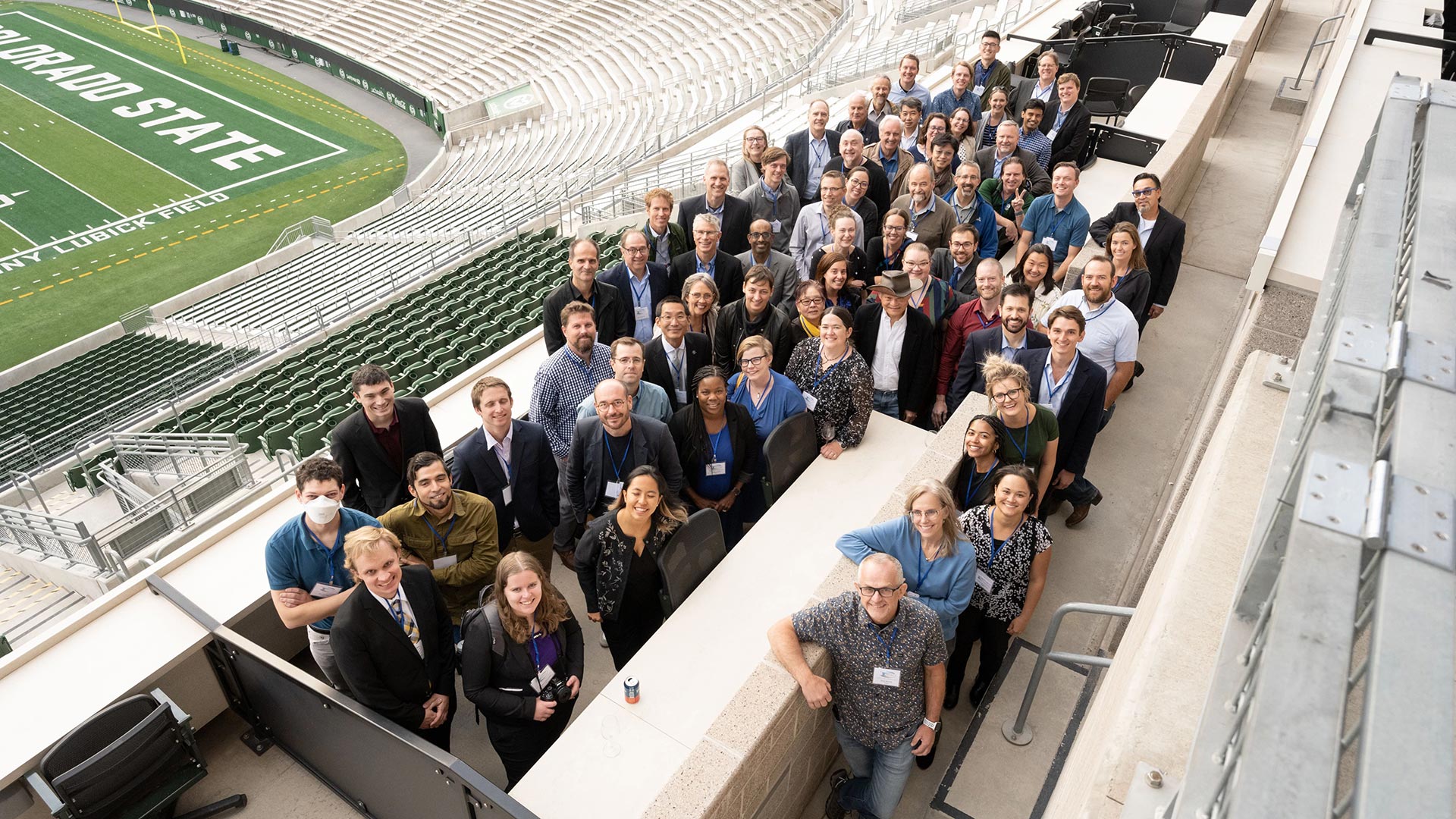
The Canvas Stadium scoreboard featured the INCUS mission last week.
Before there can be NASA satellite launches, there are planning meetings. Lots of planning meetings.
The first such all-hands meeting for the Colorado State University-led INCUS mission, awarded by NASA last year, took place on the Fort Collins campus Oct. 11-13. The event brought together scientists, engineers and students from CSU, NASA, Jet Propulsion Laboratory, NOAA, many other universities, industry partners and international collaborators who are all working together on the $177 million NASA Earth Venture mission.
INCUS, or Investigation of Convective Updrafts, is expected to launch three small weather satellites into low-Earth orbit in 2026. With their unique flight formation and miniaturized instrumentation, the satellites will measure the motions of large, damaging storms that can reach into the upper troposphere of the planet.
INCUS’ principal investigator is Susan van den Heever, University Distinguished Professor in the Department of Atmospheric Science. She leads the 100-plus person team.

Susan van den Heever welcomed science team attendees to a celebratory dinner at Canvas Stadium.
The INCUS Science Team Meeting set the science and engineering agenda for the project moving forward, laying out milestones and providing the team context for the mission’s overarching goals. It included a celebratory dinner at CSU’s Canvas Stadium to kick off the next six-plus years of hard work needed to make the mission a success.
The INCUS satellite train will provide the first tropics-wide investigation of a fundamental, difficult-to-observe atmospheric process: the rapid vertical transport of air and water within thunderstorms. This process, which storm scientists call convective mass flux, is one of the most influential recurring weather events on the planet, playing a key role in the intensity of local storms all the way to climate patterns on the other side of the world. Yet, convective mass flux as a dynamic physical process remains largely unmeasured by the atmospheric and remote sensing scientific community.
INCUS and CSU are going to change that.
More about INCUS
Read about NASA’s awarding of the INCUS project, and CSU’s heritage in NASA satellite missions.
